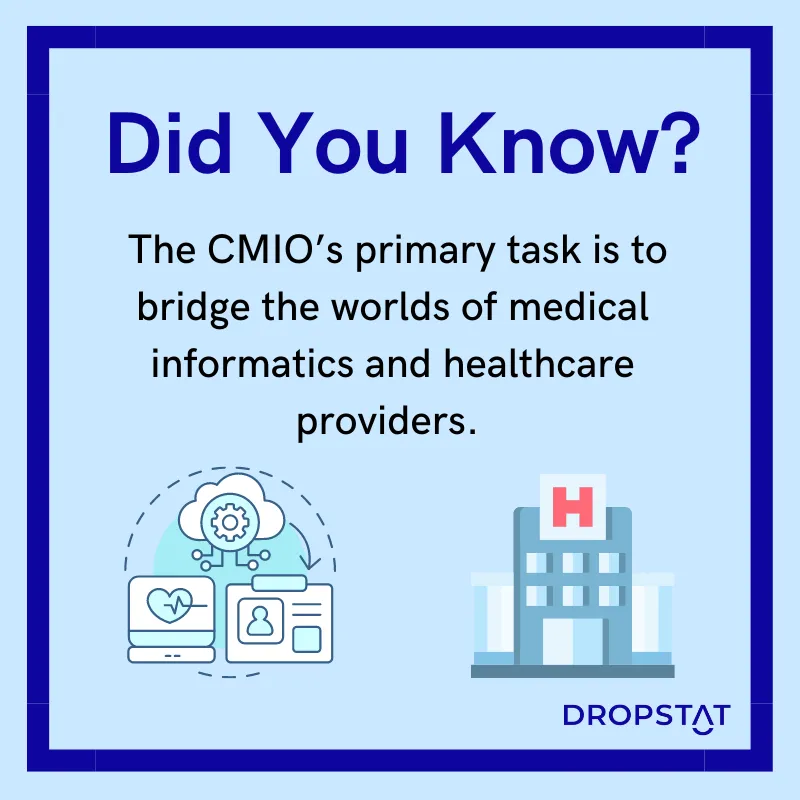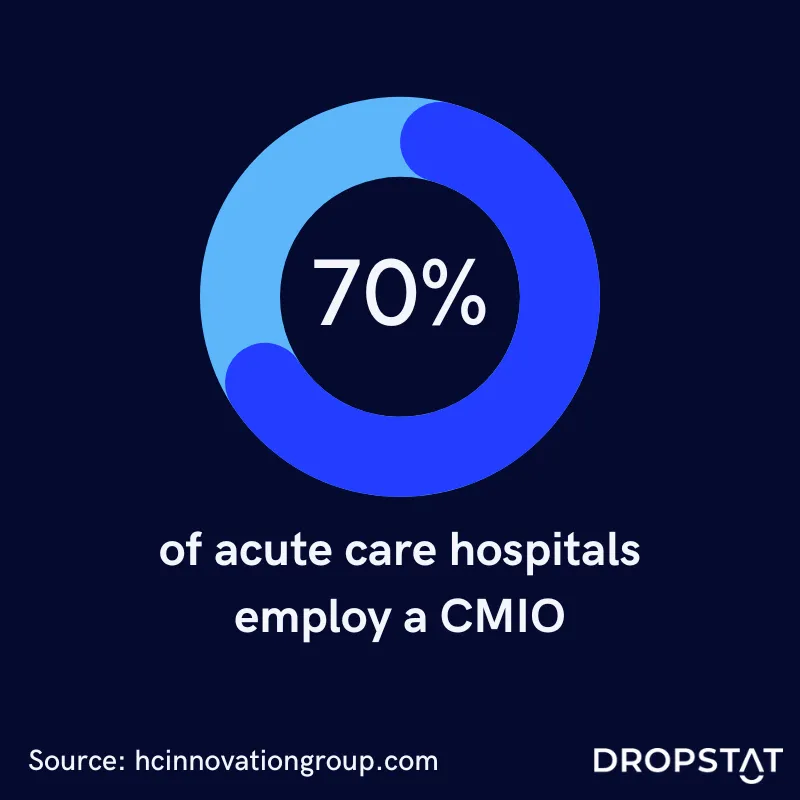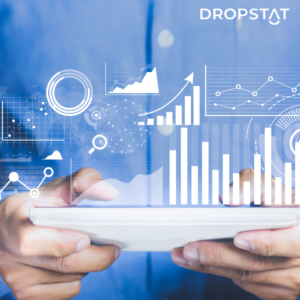A CMIO plays a key role in ensuring that a health system leverages the benefits that health informatics offers, that patient workflow is managed in an optimal manner, and that health facilities are utilizing the best and latest developments in medical information technology.
What is a CMIO?
The term CMIO stands for Chief Medical Information Officer. They are sometimes referred to as a Chief Medical Informatics Officer, a Director of Medical Informatics, or simply a Medical Information Officer. Metaphorically, the CMIO is often described as a bridge between the world of medical informatics and healthcare organizations.
The CMIO often starts out their medical career with a bachelor’s degree and is typically a qualified doctor with an interest in healthcare technology, although qualified CMIOs are sometimes people who leave medical school. Adding a master’s in health informatics or a graduate degree in health informatics or healthcare administration qualifies them for the CMIO role. In a smaller organization, the individual might continue working as a physician, but in larger healthcare organizations, they will be a dedicated medical informatics officer.

4 Responsibilities of a CMIO
The CMIO is the healthcare executive responsible for the entire clinical IT team and the health informatics platform that the healthcare organization uses. The position of the CMIO in health system management requires them to have the following skillset:
1. Breadth of Expertise
A chief medical information officer must be qualified in several areas of expertise. In addition to being an expert in information technology and informatics, the chief medical information officer also needs a medical background to understand the medical and practical needs of the various care departments.
2. Awareness of Developments
A good chief medical information officer must be aware of developments in medical informatics and adopt or acquire a health system that will improve clinical decision support that healthcare offers to payors.
3. Analytical skills
A chief medical information officer must be up to date and possess the skills needed to analyze population health data and interpret data for project development, health information advancements, and cost-saving measures.
4. Ability to Oversee Massive Systems
Typically, the chief medical information officer oversees broad systems, including electronic medical records (EMR) and centralized scheduling systems for nursing staff management.

Why is a CMIO important in healthcare institutions?
The CMIO role is important in healthcare institutions because health relies heavily on new systems and technologies. These systems incorporate
- artificial intelligence
- cloud computing
- big data
- digital health technology
which impact clinical decision support and digital imaging, among other crucial areas in healthcare. The position of the chief medical information officer in healthcare organizations provides a knowledgeable, qualified, and dedicated specialist to facilitate and bear responsibility for meeting varied medical-technological needs. For example, in acute care hospitals, where responsibility for operational safety is most critical, labor statistics show that about 70% of organizations employ a CMIO.
A CMIO has a significant impact on healthcare organizations by increasing efficiency, safety, and technological mobility in using health informatics. Tech-centered initiatives help improve the quality of patient care and safety for patients and their healthcare information, as well as information stored in organization-specific health informatics systems. Most importantly, the CMIO can drive improved health outcomes.
A CMIO and their team can make improvements in health informatics as they:
- implement and update electronic medical records systems
- improve data security and health information exchange (HIE)
- improve patient care through telehealth
- facilitate communication between healthcare professionals
- streamline clinical care workflow
- oversee technology in health systems
- develop patient engagement platforms
- measure success and impact of new technology in healthcare systems

The Future of CMIOs in Medical Facilities
The future of CMIOs is clearly evolving as they successfully facilitate major technological changes in every medical facility. Going back about 20 years, labor statistics reveal that less than 5% of U.S. hospitals implemented Computerized Physician Order Entry (CPOE) in their health systems. Medical professionals had to train and get used to using computerized physician order entry systems, and that was the benchmark of success – perhaps being left behind technically is a factor in rural hospital closures we are seeing today. That future is now our reality as every healthcare organization uses CPOE. It is the rare healthcare organization that absolves doctors from using CPOE and leaves form filling to technicians or medical secretaries.
As John Halamka explains in a short clip about the future of healthcare informatics, health informatics is the way forward in healthcare. We are beyond faxes and emails; we are beyond messaging. Big data and big data systems are what healthcare systems rely on today, and using health informatics to increase opportunities in care is what the next generation has come to expect.
The CMIO position is one that balances, controls, and keeps safe the way we access and use medical information. Going forward, technology will play an increasingly greater role in healthcare. The chief medical information officer will likely head a larger and more noticeable team in healthcare organizations. One example of an organization that has a well-established CMIO office is Penn Medicine, which is known for seeing the trend in medical innovation.
CMIO FAQs
How does a CMIO contribute to excellent patient care?
A CMIO (chief medical information officer) uses technology to significantly improve daily operations and healthcare systems that can improve patient care and outcomes while reducing errors and inefficiencies. In addition, the CMIO helps organizations improve patient safety through the access and use of patient data, and it provides clarity for healthcare professionals in using IT. For instance, a CMIO educates medics with the correct vocabulary so they can understand what is available and use it to improve patient care. The greater awareness trickles down to daily operations in patient care to improve outcomes.
When does a CMIO network with other medical professionals?
A CMIO also uses every opportunity CMIO to network and influence healthcare in both formal and informal settings. An important aspect of the CMIO role is collaboration with other occupations, such as the Chief Information Officer (CIO) or the Chief Executive Officer (CEO), depending on the reporting structure. In a survey about the CIO-CMIO relationship, an amazing 95% of CIOs revealed that a CMIO helped them achieve their objectives, and 66% of CIOs said they would not have achieved their goal in time if not for the support of the CMIO.







